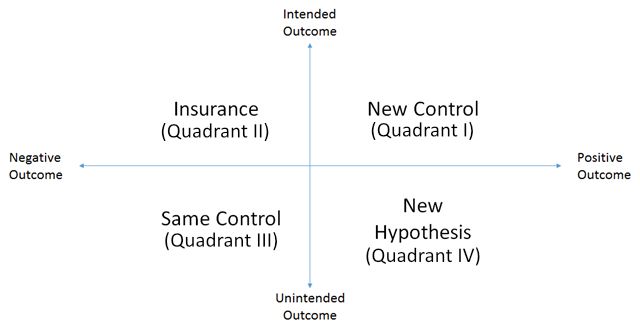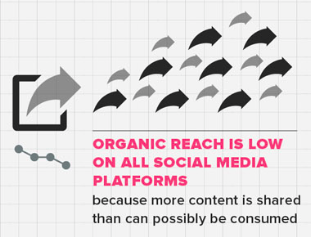A well-crafted landing page is one of the most powerful tools in digital marketing, capable of turning casual visitors into loyal customers. But if you’ve ever created a landing page, you know how much strategic planning and execution they require.
At Conversion Sciences, after years of perfecting the art and science of landing page optimization, we’ve identified six essential elements that can transform an ordinary landing page into a high-performing asset. This guide will explore these elements in detail, share actionable tips, and provide real-world insights to help you master landing page optimization.
What Makes a Successful Landing Page?
Landing pages are stand-alone web pages designed to perform two jobs:
- Keep the promise made in the ad, email, social post, or link that preceded the page.
- Ask your visitor to do something, like filling out a form, downloading a resource, or purchasing.
Unlike homepages, which serve multiple purposes, landing pages focus on a single goal. This specificity makes them one of your most effective tools for converting visitors into leads or customers.
Need some inspiration? Browse our Lead Generation Landing Page Examples.
No time to learn it all on your own? Check out our turn-key Conversion Rate Optimization Services and book a consultation to see how we can help you.
The Benefits of Well-Optimized Landing Pages
We’ve seen the difference even small improvements in landing page performance can make. Here are three of the top outcomes you’ll experience when your landing pages are doing their job.
1. Maximize ROI
Most web pages don’t convert — they’re not designed to. But landing pages are designed to convert. They outperform popups, signup boxes, and wheels of fortune for opt-ins, with a 23% conversion rate.

Landing pages outperform other lead generation tactics with a 23% conversion rate.
Across all industries, the average landing page conversion rate is 2.35%, according to Wordstream. But the top 10% of landing pages achieve conversion rates of 11.45% or higher, depending on the landing page type.

Benchmarks for landing page conversion rates vary widely by industry, but these are the averages.
2. Simplify Decision-Making
The human brain craves simplicity, especially when faced with choices. High-converting landing pages capitalize on this by reducing cognitive load. They use clear calls-to-action (CTAs), concise copy, and a streamlined design to guide visitors toward a single desired outcome.
Imagine landing on a page that bombards you with navigation menus, multiple CTAs, and walls of text. It’s overwhelming, right? Now compare that to a page with a single, bold CTA — like “Sign Up Now” — and enough information to convince you to act. This simple page removes distractions, making it easier for visitors to decide.
You can thank Hick’s Law for this insight. It tells us that the more choices you offer, the longer it takes for someone to make a decision. And it explains why a simplified landing pages can move visitors quickly down the conversion funnel.
💡 In one of our projects, simplifying the layout of an eCommerce landing page led to a 15% reduction in bounce rates and a corresponding increase in sales.
3. Enhance Engagement
Grabbing and holding a visitor’s attention is no small feat. High-converting landing pages achieve this by delivering tailored content that speaks directly to the visitor’s needs and interests.
Take, for instance, an online retailer promoting a seasonal sale. A landing page promoting winter apparel with targeted messaging — like “Stay Warm and Save Big This Winter” — is far more engaging than a generic sales page. Add to that personalized content, such as product recommendations based on browsing history, and the page becomes a magnet for conversions.
Engagement isn’t just about content, though. The design and user experience play crucial roles. Eye-tracking studies show that users focus on areas with clean layouts, contrasting colors, and compelling visuals. By optimizing these elements, you can create a page that captivates visitors and keeps them moving toward your goal.To increase engagement, design and the user experience are key. For example, when we improved UX/UI for Boingo, they saw a 2x increase in sales and a 38% lift in overall revenue.

Optimizing UX/UI gave Boingo a 2x increase in sales and a 38% life in overall revenue.
Creating a Successful Landing Page
It’s easy to obsess over landing page best practices: Is this the right font? Is the color theme too loud, not loud enough? Too many options? Not enough options? What is with this border?
But bottom line, a landing page is ultra-simple. It keeps a promise and entices visitors to take action. That’s it. So let’s break down the basic components of a landing page and what you need to think about for each.
1. A Compelling Offer
Your offer is the foundation of your landing page. It’s the “why” behind the action you want visitors to take. To make your offer irresistible:
- Make it About Them: Focus on your visitor and what they want.
- Address Pain Points: Let them know you understand their challenges.
- Present a Solution: Give them a painless way to solve their problem.
A compelling offer is clear and compelling. At its most basic, it tells you what you’ll get if you take action. For example, a SaaS company might offer a free trial with messaging like, “Get 14 days of unlimited access—no credit card required.”
Look at how simply Netflix presents its offer:
- What you want/get: Unlimited movies, TV shows, and more
- Cost: “Starts at $6.99.”
- Risk reduction: “Cancel anytime.”

Netflix has a streamlined landing page that makes it easy to say yes.
2. A Simple Form
Forms are where conversions happen, but they can also be where visitors drop off. To increase form completion rates:
- Keep It Minimal: Ask only for essential information. An email address is often enough to start a relationship.
- Provide Context: Use microcopy to explain why you’re asking for certain details.
- Use an “invitational” CTA on the button: “Get Started” creates less friction than a transactional CTA like “Buy Now.”
Pro Tip: Our clients have seen conversion rates increase by up to 40% after reducing their forms from six fields to three. The more form fields your visitor has to fill out, the more friction they feel, and the less likely they are to convert.
If in doubt, look at Google’s homepage:

Google’s landing page is ultra simple with no friction
The offer is implied: search for anything. The form has just one field. And its buttons, “Google Search” and “I’m Feeling Lucky,” are invitational.
This simple white page makes a complete landing page. But of course, for your landing pages, you’ll want a few more conversion elements, so let’s explore those elements and how they will help you create a successful landing page.
3. Persuasive Copy
Not all visitors arrive ready to convert. Even slight objections can prevent them from taking action. Clear, compelling copy answers objections, builds trust, and explains why taking action today is smarter than waiting.
Short, text-based descriptions of the landing page offer can make a difference. Keep in mind persuasive copy doesn’t focus on your business or even the product. Always talk about what’s in it for the visitor.
- Speak directly to their concerns: use empathetic language to acknowledge potential doubts.
- Build confidence: highlight benefits with stats or testimonials.
- Emphasize simplicity: reassure them that completing the action is quick and easy.
At Conversion Sciences, we’ve seen as much as a 42% lift in conversions after increasing a landing page’s persuasive power. (Here are some of our persuasive writing techniques.)
But persuasive copy isn’t your only option. Media can also make a difference. Studies have found that 9 out of 10 people want companies to create more videos, and 38.6% of marketers report that videos positively impact their conversion rate.
Whether you’re using text or video, try to create urgency so people take immediate action. Phrases like “Limited Time Offer” or “Only 5 Spots Left” can help — just make sure the urgency is real. If you’re selling a digital product, you can’t run out of inventory, but you can make your offer available only until midnight.
Quick Tip: Generic statements don’t drive action. To persuade, you need to be ultra-specific. Notice how the numbers in these examples draw the eye:
- A fitness coach promoting a meal plan: “Discover the secret to losing 10 pounds in 30 days—no fad diets required.”
- A trainer promoting an online course: “Join 11,377 professionals who’ve leveled up their careers with our training.”
4. Proof and Trust Elements
Trust is the linchpin of online conversions. Without it, even the most compelling offer can fail. To establish trust:
- Leverage Social Proof: Add testimonials, case studies, or customer reviews.
- Show Trust Badges: Highlight SSL certificates, security seals, or payment logos.
- Use Recognizable Logos: Display well-known client or partner brands to boost credibility.
Example: After adding trust elements to an ecommerce client’s product pages and optimizing key elements of their value proposition, they saw an 18% lift in revenue per session, a 12% growth in customer acquisition rate, and a 6% increase in average order value. Proof and trust can significantly improve a landing page’s performance.
c

This Galeton ecommerce landing page highlights quality ratings to prove the quality of their products and increase trust.
5. Relevant Images
Visuals aren’t just about aesthetics; they play a critical role in conveying value and enhancing understanding. Effective images:
- Illustrate the Offer: Use screenshots, product photos, or mockups to make intangible offers feel tangible.
- Enhance Emotional Appeal: Choose images that resonate with your audience’s aspirations or pain points.
- Avoid Stock Clichés: Generic visuals can undermine trust and authenticity.
It doesn’t matter whether you sell a physical or digital product — an image makes it “real.” Rendering downloadable resources, like eBooks or white papers, as physical items in images helps users perceive them as tangible and valuable.
Example: Amy Porterfield presents screenshots from her online business courses on desktops, tablets, and phones. This quickly communicates the depth and accessibility of her training.

Even if you sell a digital product, you must “make it real” with graphics
6. Clean and Focused Design
Design can make or break your landing page. A cluttered layout confuses visitors, while a clean design keeps them engaged. Key principles include:
- Use Contrast for CTAs: Make your call-to-action button stand out with bold colors.
- Optimize for Mobile: With over half of web traffic coming from mobile devices, responsive design is a must.
- Reduce Distractions: Remove unnecessary navigation or external links that might lead visitors away.
Pro Tip: Even if you love your design, your visitors may not. Take Jaguar’s logo redesign.

Jaguar’s new logo met with resistance from their loyal fans
As it enters “The New Era” of electric cars, Jaguar felt a redesign was in order. Many consumers disagree. LinkedIn posts call it a “car crash” and “downgrade branding” and predict harm to their brand:
Most landing pages don’t get the backlash Jaguar’s rebrand got, but it’s a good illustration of why we design pages for our visitors, not our own preferences.
To understand what visitors like (and don’t like), our Conversion Scientists® use heatmaps and user testing tools like Hotjar. If people avoid any part of the page, there’s likely something wrong with the layout or design, and these tools tell them where they can refine the landing page design to improve conversions.
Why guess when you can know? CRO tools provide the insights and data you need to make smart optimization decisions.
Here’s our scientific breakdown of these elements:
Here are the steps you can take to create a controlled Landing Page reaction in your digital laboratory.

Please include attribution to our website with this graphic.
Landing Page Best Practices: Expert Tips for Landing Page Mastery
Creating a landing page that converts is only the first step. To maximize results, you need to continually refine and optimize every aspect of the page. This second half of the article dives deeper into the strategies and tools used by top marketers to fine-tune their landing pages for peak performance.
Optimization requires regular testing, data analysis, and a willingness to iterate based on user behavior and industry trends. The difference between a good landing page and a great one often lies in the details — small adjustments that have a disproportionate impact on conversions. From mastering A/B testing to understanding how different metrics influence your strategy, this section equips you with the knowledge and tools to take your landing pages to the next level.
Note: A/B testing isn’t always the most appropriate CRO technique. Listen in as our Scientists discuss the different types of CRO for different needs.
Landing Pages for Different Goals
Not all landing pages are created equal. Tailoring your approach to specific objectives can enhance performance:
- Lead Generation: Offer a clear value exchange, like an eBook or webinar for minimal information.
- eCommerce: Showcase product images, highlight key features, and include trust signals like secure payment icons.
- Affiliate Marketing: Focus on relevance and clarity to drive click-throughs and conversions.
Example: One of our clients in the SaaS space increased lead generation by 35% after optimizing their landing page with a simplified form and enhanced trust elements.
Metrics That Matter

To measure the success of your landing page, track these key performance indicators (KPIs):
- Conversion Rate: The percentage of visitors who complete the desired action.
- Bounce Rate: The percentage of visitors who leave without taking action.
- Time on Page: A higher duration indicates strong engagement.
We recommend using tools like Google Analytics, Optimizely, or Crazy Egg can help you monitor these metrics and identify areas for improvement.
Tools and Resources for Landing Page Success
Some basic tools that will help you optimize your landing pages are:
- Unbounce: For creating and testing landing pages without coding.
- Hotjar: To analyze user behavior with heatmaps and session recordings.
- VWO: For A/B testing to see what resonates with your audience.
When you’re ready to up your conversion game, check out our list of 20 AB testing tools recommended by CRO pros.
Best Practices for Ongoing Optimization
Creating a successful landing page isn’t a one-time task. Continuous improvement is key. Here’s how to stay ahead:
- Regular Testing: Use A/B testing to evaluate headlines, CTAs, and layouts.
- User Feedback: Gather insights from surveys or heatmaps to understand user behavior.
- Content Updates: Keep your page fresh by aligning it with current campaigns or trends.
We’ve seen the impact of incremental improvements on a landing page’s performance. But if you’re curious to know how it will improve your results, submit the Conversion Optimization Upside Calculator, and we’ll do the calculations for you.
Final Thoughts: Creating a Landing Page That Converts
Creating a high-performing landing page doesn’t happen by chance — it requires strategy, testing, and attention to detail. By focusing on the six essential elements outlined above, you can craft simple landing pages that consistently deliver results.
If you’re ready to take your landing pages to the next level, let us help you. Level up your skills with our Conversion Rate Optimization Training. Or ask about our fully-managed CRO services.












 Andrew Gazdecki is the founder and CEO of
Andrew Gazdecki is the founder and CEO of 





















